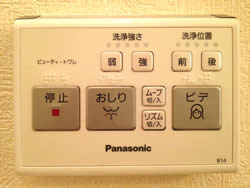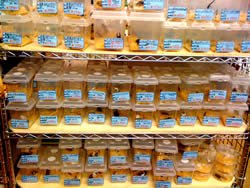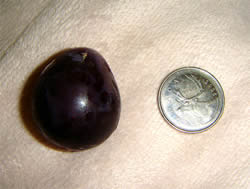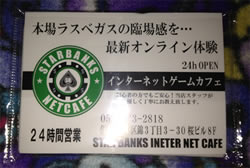- Home » Expat Contests » Writing Contest March 2013 - The Top Six Things That Unexpectedly Surprised Me About Japan
The Top Six Things That Unexpectedly Surprised Me About Japan
By: Adrienne
In 2004, I left Canada for a year to participate in an exchange program in Nagoya, Japan. A few years later, I returned, and have been living here ever since.When you travel to a new country, you always expect to find things that are different from what you’ve become accustomed to, but sometimes those differences are found in the most unexpected places. So, I’m sharing my list of the Top Six Things That Surprised Me About Japan in hopes that anyone relocating here will be a little more prepared, and find adjusting a little bit easier.
- Robot Toilets, and Toilets of Yore
When I first came to Japan, I unfortunately spent my second week in the hospital. While there are many differences between Canadian and Japanese hospitals, that’s not what surprised me. What really got me was the toilet.
When I went to use the washroom in the connected to my hospital room, I peeled back the sliding door to reveal what, at the time, I could only describe as a robot toilet. As I entered, the lid popped up on its own, and mounted on the wall was a control panel. I studied the buttons, which were labelled in Japanese, with icons, and in braille. There were buttons for washing, a button to dry, a timer, buttons for jet strength and location, and the seat was always warm.
Needless to say that when I checked out of the hospital, the standard “western” toilet back at the dorms didn’t measure up.
“Washlet” toilets are very popular in Japan, and can be found in many homes, and upper end department stores. Public washlet toilets often have an option where the user can choose to have running water or bird sounds playing while they’re doing their business. They also have deodorizer, which is great in a public restroom.
Let me warn you though, not all toilets in Japan are technologically advanced. In fact, in a lot of old buildings, subway stations, schools, and rest areas you can find nothing but “Japanese style” or “squat” toilets. And that’s just what you do; you squat and go. They’re basically urinals that are placed horizontally in the ground. On the plus side, they generally come equipped with a handle to help you keep your balance. Just watch out for the splash up when you flush! - Miniature Zoos, and Clothing for Dogs
If a trip to the zoo is too expensive, just head on over to a pet store. This doesn’t apply to all pet shops, but a lot of the big chain stores carry an extremely wide variety of “exotic” animals.
One of the pet shops I frequent is in a mall. When you first enter you’re greeted by the puppy section, and to the right of the dogs is the cat house, which leads you into the fish area. Then you hit the small animals room, and things just get wild.
Of course there are creatures for sale that you would generally expect to find, like hamsters, guinea pigs, rats and mice, rabbits, turtles, birds like parakeets and parrots, and reptiles like iguanas and snakes. There’s also the more exotic mammals, like chinchillas, degus, hedgehogs and ferrets. But then they have a slew of animals that I would have never imagined seeing in any pet store. This list includes monkeys, prairie dogs, flying squirrels, owls, hawks, bats, goats, chickens, ducks, wallabies, a fully grown tortoise, and an armadillo.
One popular pet here that I will never understand is the beetle. Whenever beetles are “in season” you can find boxes upon boxes of them stacked up on display. Just thinking about them gives me goose bumps. I’m terrified that someone will knock them over, and hundreds of beetles will run rampant through the mall.
Aside from the animals themselves, Japan has an unbelievable array of dog clothing. You can find stores dedicated solely to clothes (and strollers) for dogs. The clothes don’t come cheap either; a sweater for a small dog can easily cost upwards of $30.00 USD, and it’s not out of the ordinary to find a coat for over $100.00 USD. But the oddest item available for purchase? Dog wigs. - Tap and go!
The public transportation system in Japan is outstanding, especially if you’re in a big city. In February 2011, Nagoya implemented the trendy smart card system with the release of “manaca”. manaca is a rechargeable card that you can use to ride the subway, local trains, and buses, and to buy items at convenience stores, or from vending machines.
In Toronto we still have tokens.
The card itself is a 500 yen deposit, and can be purchased at most stations. The machines where you buy and charge the card are simple to use, and if you’re nervous about doing everything in Japanese, they have an English option.
Ready to ride the subway? Just tap your manaca at the wicket. Do not slide it into the ticket slot. It will not work, and the wicket will beep angrily at you until it’s fixed. If you’re buying something at the store, tap it at the cash register. Buses work the same way; tap and go.
It’s versatile and quick; there’s no signature required when you use it. If you register your card, which includes filling out your name, birthday, gender, and phone number, you won’t lose anything if it’s lost. Report it as lost, and be reimbursed the remaining amount.
Suica and Pasmo are other cards that work the same way, but currently Nagoya only accepts manaca. This is changing come April 21st of this year.
These cards cannot be used on the “shinkansen”, or bullet trains. Tickets for the bullet train must be bought in advance at a ticket agent, travel agent, or one of the self-serve machines located in most big stations. - Garbage Day
Dealing with garbage here in Nagoya is no easy task. When I first moved here, I was terrified of making a mistake. I didn’t want the garbage man to come banging on my door, asking me to resort it. Although I can’t say I’ve heard tell of that happening.
You need to put the appropriate type of garbage into the correctly coloured bag. Many apartment complexes have a garbage area so you can toss your bag there when it’s full. Others do not, making it your responsibility to bring the right type of garbage to the curb on the correct day.
Red bags are for burnable garbage, like food waste. Blue is recyclable and is usually separated into plastic (that hasn’t been used with food), paper, and “hazardous” items (like lighters). Green is for non-burnable garbage, such as light bulbs. The bags can be purchased at your local convenience or 100 yen store.
It might not seem so bad, but we’re not quite finished. Glass, steel, aluminum and plastic bottles all need to be separated. Cardboard, newspapers and magazines should be bundled together. If your piece of garbage exceeds 30cm, you have to call for pick-up after buying a sticker to show that you’ve paid.
The city will not dispose of things like televisions, refrigerators and washing machines. You have to take the item to a disposal centre yourself, or arrange for it to be taken care of. Don’t worry though, you’ll get plenty of fliers in your mail box for these types of services.
Even though taking care of the garbage is a giant pain, I’m constantly amazed at how clean Nagoya is especially considering you can never find a garbage can when you need one!
If you’re interested in more information about garbage sorting in Nagoya, the city has a handy chart available online: http://www.city.nagoya.jp/en/cmsfiles/contents/0000022/22536/guide_e.pdf - Fruit can be elite
When I had just moved back to Japan, I stopped at a local fruit shop. It’s an old store, probably family owned, and run by an elderly couple. Some items had prices attached to them, but not everything was labelled. I picked up a mango, and went to pay.
The gentleman told me it was 600 yen, and although I thought that was a bit steep, I decided to treat myself. As I was digging through my purse, I noticed him write down in a book “mango” and next to it “6000 yen”. I froze, frantically trying to recall what he had said. I must have misunderstood, but there was no way one mango could cost 6000 yen!
I was wrong. It did cost 6000 yen.
I didn’t take the mango.
The mango hasn’t been the only super expensive fruit that I’ve encountered. In fact, many stores sell what are supposed to be “higher quality” fruit for a very high price. These prices can sky-rocket when the fruit is in season, because that’s when they’re in their prime.
“Kyohou” is a variety of grape that is extremely popular around September. They’re huge, juicy, and absolutely delectable – even the inexpensive ones. One store had these grapes for 10,000 yen, which is around $100.00 USD. For that much you’d expect a whole lot of grapes, but all you’d have gotten for that price was two bunches.
A box of four large peaches, or eight seemingly regular tangerines can be over $50.00 USD.
Maybe they’re well worth their price, but I’ve never been able to justify spending that much to find out.
If you’re in the market for some over-priced, but apparently more delicious, fruit check out the basement floor of the a big name department store, like Matsuzakaya. The basement levels always have a wide selection of food, including a high end fruit area. - Tissue advertising, and why you should take them
In any busy Japanese city, you’ll often find young adults hanging out on street corners or at subway exits handing out small packages of tissue. You can also find the same packages stuffed into your mailbox, along with millions of flyers.
At first, I was skeptical as to why I was being given so many free tissues, but giving them out is one way companies here advertise. Slipped inside the top of the package is usually a small paper ad. It also allows them to target their advertising to their consumers, aiming to hand out tissues to who they think fits their audience. Of course you don’t have to take them if they’re offered to you, and it’s not rude to politely decline by raising your hand in a “stop” fashion.
At one point in time, I stopped taking the tissues. It just got to be too many, and they made my purse feel crowded. My friend, on the other hand, always accepted them. She would easily have four or five packs in her purse at a time, and I would tease her about it.
One fateful day I had to stop at the subway to use the restroom. Many subway washrooms do not supply toilet paper. This was one of them. I had to bite my tongue and ask my friend for one of her many packages of tissue. From that day on, I’ve always made sure to have at least one in my purse. After all, they are free.
Even though I’ve been living in Japan for four years, I still find things that surprise me. These unexpected surprises make life more interesting, and constantly remind me that there’s still a lot of Japan for me to explore.
Grab a badge that links to this contest entry!
 Copy and paste code to display this Contest Entry Badge:
Copy and paste code to display this Contest Entry Badge:Contest Comments » No published comments just yet for this article...
Feel free to have your say on this item. Go on... be the first!




 Adrienne is a Canadian expat living in Japan. Blog description: A blog from a Canadian girl's perspective about living and teaching in Japan. Includes photos, commentary, and every now and then, teaching ideas.
Adrienne is a Canadian expat living in Japan. Blog description: A blog from a Canadian girl's perspective about living and teaching in Japan. Includes photos, commentary, and every now and then, teaching ideas.





